Tuesday, August 31. 2021
Note: this publication was released at the occasion of the exhibition Entangled Realities - Living with Artificial Intelligence, curated by Sabine Himmelsbach & Boris Magrini at Haus der elektronischen Künste, in Basel.
The project Atomized (curatorial) Functioning (pdf), part of the Atomized (*) Functioning serie, was presented, used and debatedi n this context.
-----
By Patrick Keller














Wednesday, August 25. 2021
Note: still catching up on past publications, these ones (Cloud of Cards and related) are "pre-covid times", in Print-on-Demand and related to a the design research on data and the cloud led jointly between ECAL / University of Art & Design, Lausanne and HEAD - Genève (with Prof. Nicolas Nova). It concerns mainly new propositions for hosting infrastructure of data, envisioned as "personal", domestic (decentralized) and small scale alternatives. Many "recipes" were published to describe how to creatively hold you data yourself.
It can also be accessed through my academia account, along with it's accompanying publication by NIcolas Nova: Cloud of Practices.
-----
By Patrick Keller
--
The same research was shortly presented in the Swiss journal Hemispheres, as well as in the international magazine Frame:



--
.jpg)


Note: to catch up on time and work with the documentation of our past publications, this one was published already some time ago by ECAL / University of Art and Design, Lausanne (HES-SO), but still a topical issue (> how to redesign/codesign datacenters and the access to personal data in both a sustainable and "fair" way for the end user?)
We're currently working on an evolution of this project that involves the recent decentralized technologies that emerged in the meantime (a.k.a "blockchains", "NFT", etc.). In the meantime, we are preparing academic talks on the subject with the media sociologist Joël Vacheron, who will be invoved in the next phases of the research -- would they happen... --
-----
By Patrick Keller

(sorry for the strange colors on these 3 img. below...)


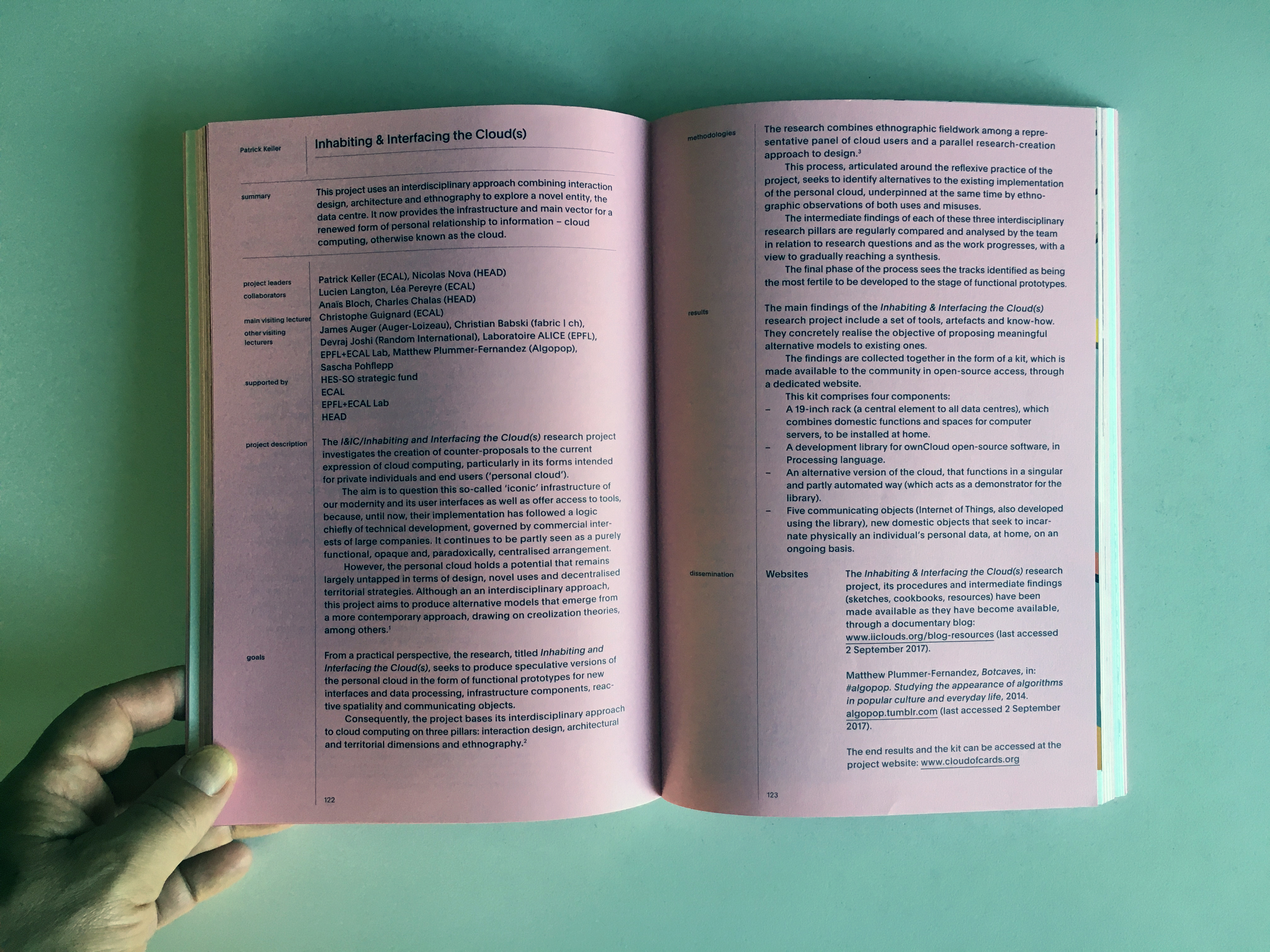


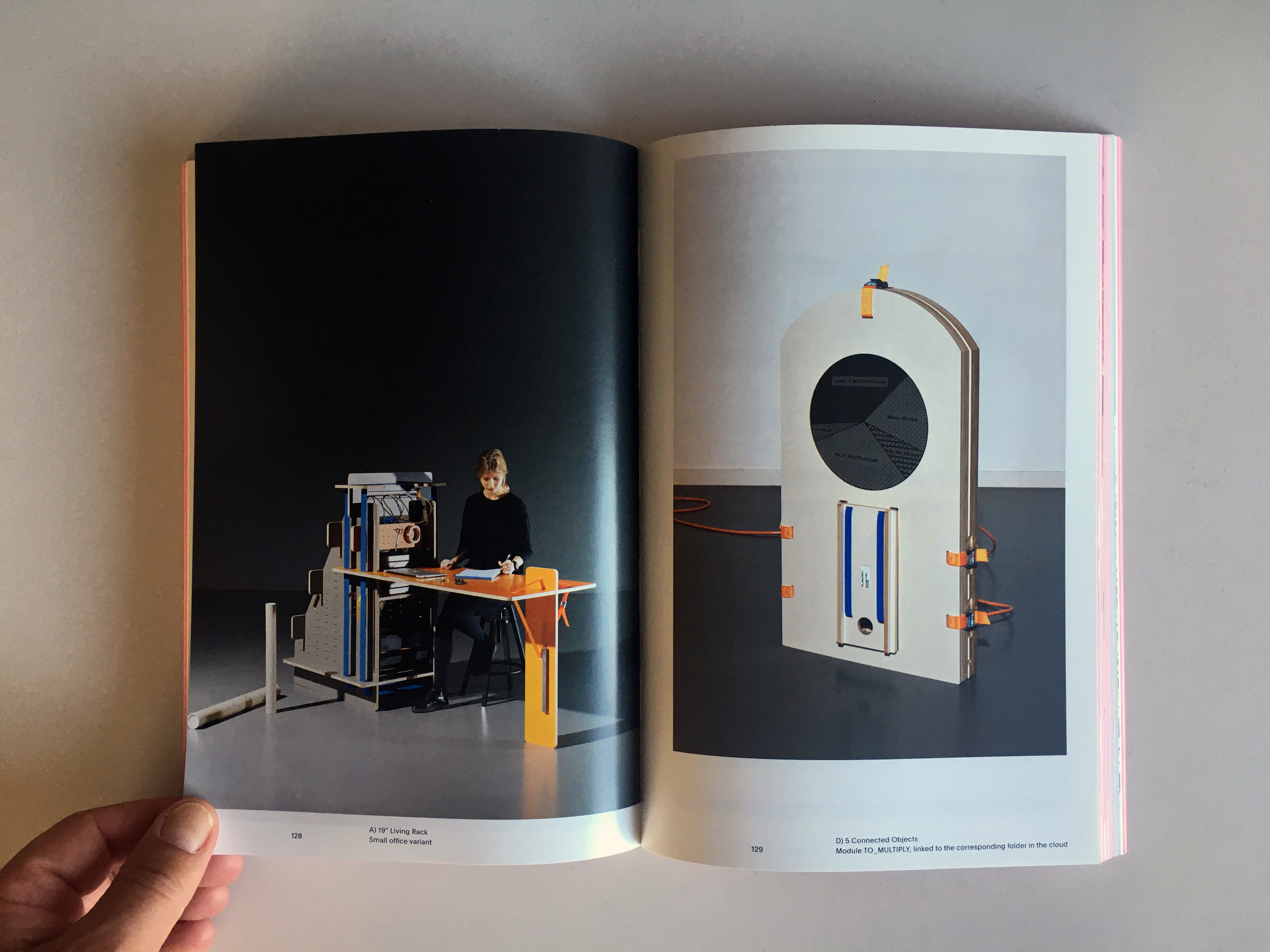


Wednesday, July 14. 2021
Note: Patrick Keller (fabric | ch) was in discussion with curator Sabine Himmelsbach, from Haus der elektronischen Künste in Basel (CH), about their new acquisition for the collection of the Museum: Satellite Daylight 47°33'N.
The piece will be displayed permanently in the public space of the HeK. At least until breakdown... But interestingly, it is also part of a whole program of digital conservation at HeK that should prevent its technological collapse, for which we had to follow a tight protocol of documentation and provide the source code pf the work.
-----

fabric | ch, Satellite Daylight, 47°33‘N, 2020, Vue de l'installation durant «Shaping the Invisible World», 2021, HeK. Photo.: P. Keller.
Shooting set in preparation ...


Followed by our discussion with Sabine Himmelsbach ... (with a lot of reverb in the staircase!)
-----
Via Haus der elektronischen Künste (blog)
Patrick Keller of fabric | ch, a studio for architecture, interaction and research in Lausanne, provides thrilling insight about the new work installed in the staircase of HeK.
Patrick Keller of fabric | ch, a studio for architecture, interaction and research in Lausanne, provides information about the new work in an interview. The installation Satellite Daylight, 47°33’N, commissioned for the HeK collection, simulates the light registered by an imaginary meteorological satellite orbiting the earth at the latitude of Basel at a speed of 7541m/s.
Monday, June 28. 2021
Note: fabric | ch was part of the exhibition Shaping the Invisible World, in the middle of the world pandemic (03.03 - 23.05.21).
A new creation, Satellite Daylight 47°33'N was exhibited at this occasion (img. below), which was also acquiredby HeK and enters it's collection at the same time.
Among others, the exhibition displays works by Tega Brain, Bengt Sjölén & Julian Oliver, Bureau d'études, James Bridle, Trevor Paglen, Quadrature, etc. and was curated by Boris Magrini and Christine Schranz.
-----
Via Haus der eletronischen Künste
The exhibition «Shaping the Invisible World – Digital Cartography as an Instrument of Knowledge» examines, through cartography, the representational forms of the map as a tool between knowledge and technology. The works of the artists on view negotiate the meaning of the map as a gauge of our digital, technological and global society.

(Photo.: fabric | ch)

(Photo.: T. Marti)

fabric | ch, Satellite Daylight 47°33'N (2021) at the Haus der elektronischen Künste (photo.: fabric | ch).
Cartography – the science of surveying and representing the world – developed in antiquity and provided the springboard for communication and economic exchange between people and cultures around the globe. At the same time, maps are undeniably never neutral, since their creation inherently involves interpretation and imagination. Today, it is IT companies that drive progress in the field and drastically influence our views of the world and how we communicate, navigate and consume globally. While map production has become more democratic, digital maps are nevertheless increasingly used for political and economic manipulation. Questions of privacy, authorship, economic interests and big data management are more poignant than ever before and closely intertwined with contemporary cartographic practices.
Today’s maps not only depict, but also document, negotiate and visualize subjective views of the world. But are these maps more democratic? Who benefits from self-determined productions and what consequences do they lead to?
The strategies in digital mapping and cartography employed by the artists presented in Shaping the Invisible World – Digital Cartography as an Instrument of Knowledge are subversive. Their spectacular panoramas and virtual scenarios reveal how the digital technologies culturally affect our understanding of the world.
Navigating between subversive cartography and digital mapping, the exhibition puts the spotlight on the fascination of maps in relation to the democratization of knowledge and appropriation. By uncovering hidden realities, scarcely visible developments and possible new social relationships within a territory, the artists delineate the evolution of invisible worlds.
-
Artists: Studio Above&Below, Tega Brain & Julian Oliver & Bengt Sjölén, James Bridle, Persijn Broersen & Margit Lukács, Bureau d'études/ Collectif Planète Laboratoire, fabric | ch, Fei Jun, Total Refusal (Robin Klengel & Leonhard Müllner), Trevor Paglen, Esther Polak & Ivar Van Bekkum, Quadrature, Jakob Kudsk Steensen
Curators: Boris Magrini and Christine Schranz

(View the pictures of the exhibition directly on HeK's website).
Note: A new work by fabric | ch has been commissionned and aquired by the Haus der elektronischen Künste (HeK) in Basel for the museum's collection, part of the Satellite Daylight serie of "environmental devices".
It is the second work of fabric | ch that enters the collection, after a serie of four videos related to Satellite Daylight and entitled Satellite Daylight Pavilion. We are glad to join artists in the collection like Jodi, mediengruppe!Bitnick, Etoy, ... and also former students or colleagues at ECAL/University of Art and Design Lausanne (Juerg Lehni, Gisin & Vanetti, FragmentIn)!
This new artwork is entitled Satellite Daylight 47°33'N, and circles in fictious and continous way around the 47°33'N latitude -- while acquiring live environmental data about daylight, light intensity, nebulosity and cloud cover that drive the luminous display. --
This continuous circonvolution, at the speed of a real Earth Satellite and that triggers 16 nights and days per regular day on Earth, produces a new combined daylight at the point of installation, both local and internationally mediated.
Satellite Daylight's is an open serie of unique artworks, each located on a different latitude.
Via fabric | ch
-----




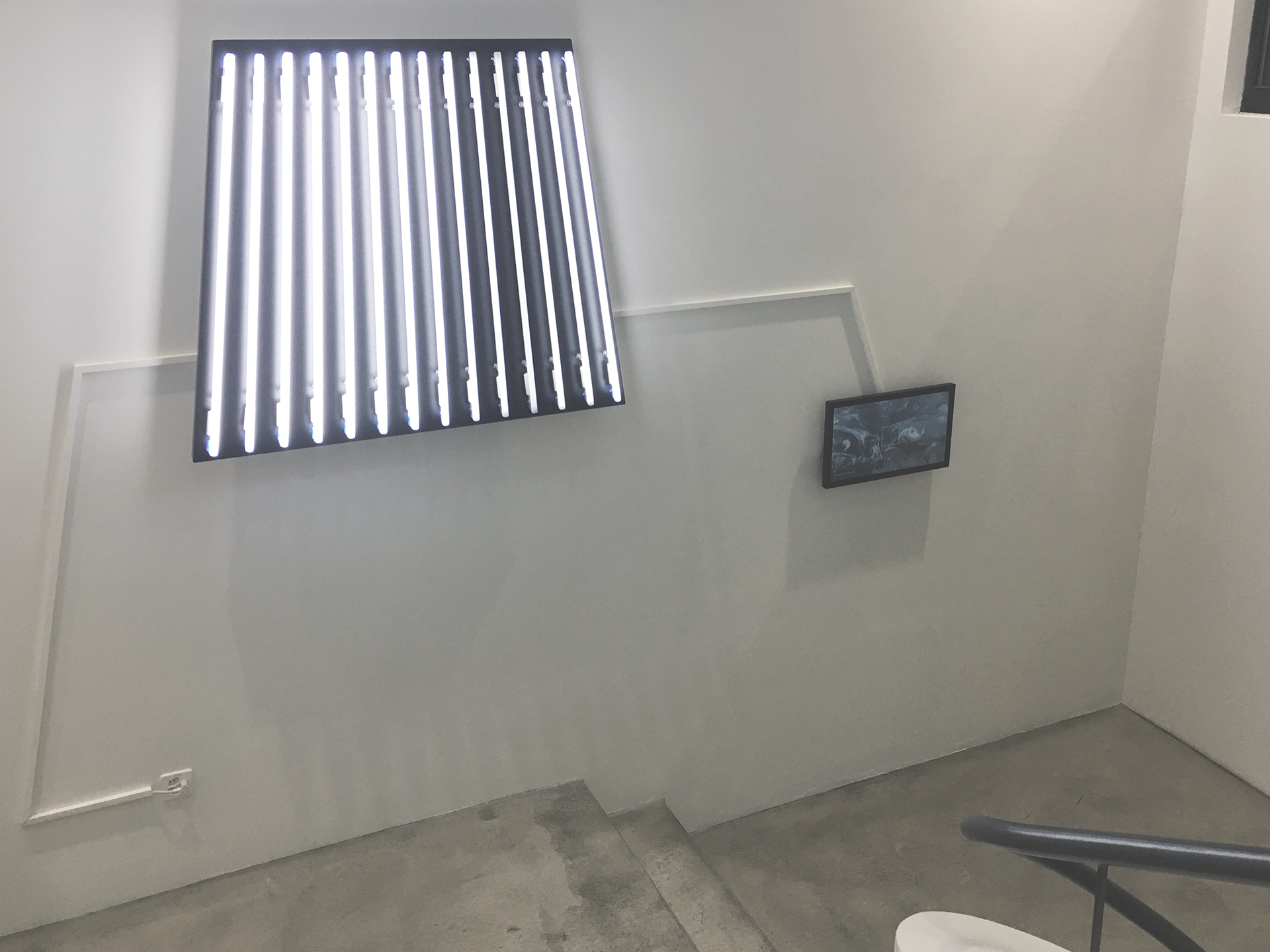

(Photo.: P. Keller)
Monday, August 31. 2020
Note: during the long shutdown of the museums in Switzerland last Spring, fabric | ch has nevertheless the chance to see Public Platform of Future Past (pdf), one of its latest architectural investigations, integrated into the permanent collection of the Haus der elektronischen Künste (HeK), in Basel.
We are pleased that our work is recognized by innovative and risk taking curators (Sabine Himmelsbach, Boris Magrini), and become part of the museum's collection, along several others works (by Jodi, !Mediengruppe Bitnik, Olia Lialina, Christina Kubisch, Zimoun, etc.)
It is also the first of our work whose certificate of authenticity has been issued by a blockchain! (datadroppers)
A second work - currently in production - will enter the collection in the spring of 2021, which will be documented at that time.
-----
Via Haus der elektronischen Künste
By Sabine Himmelsbach
HeK Sammlung - Sabine Himmelsbach über fabric | ch from HeK on Vimeo.
---
The video work is composed of four distinct videos, each showing a distinct but static view into a timelapse of the pavilion and its evolving light.
All four video must be displayed simultaneously by following minimal instructions.
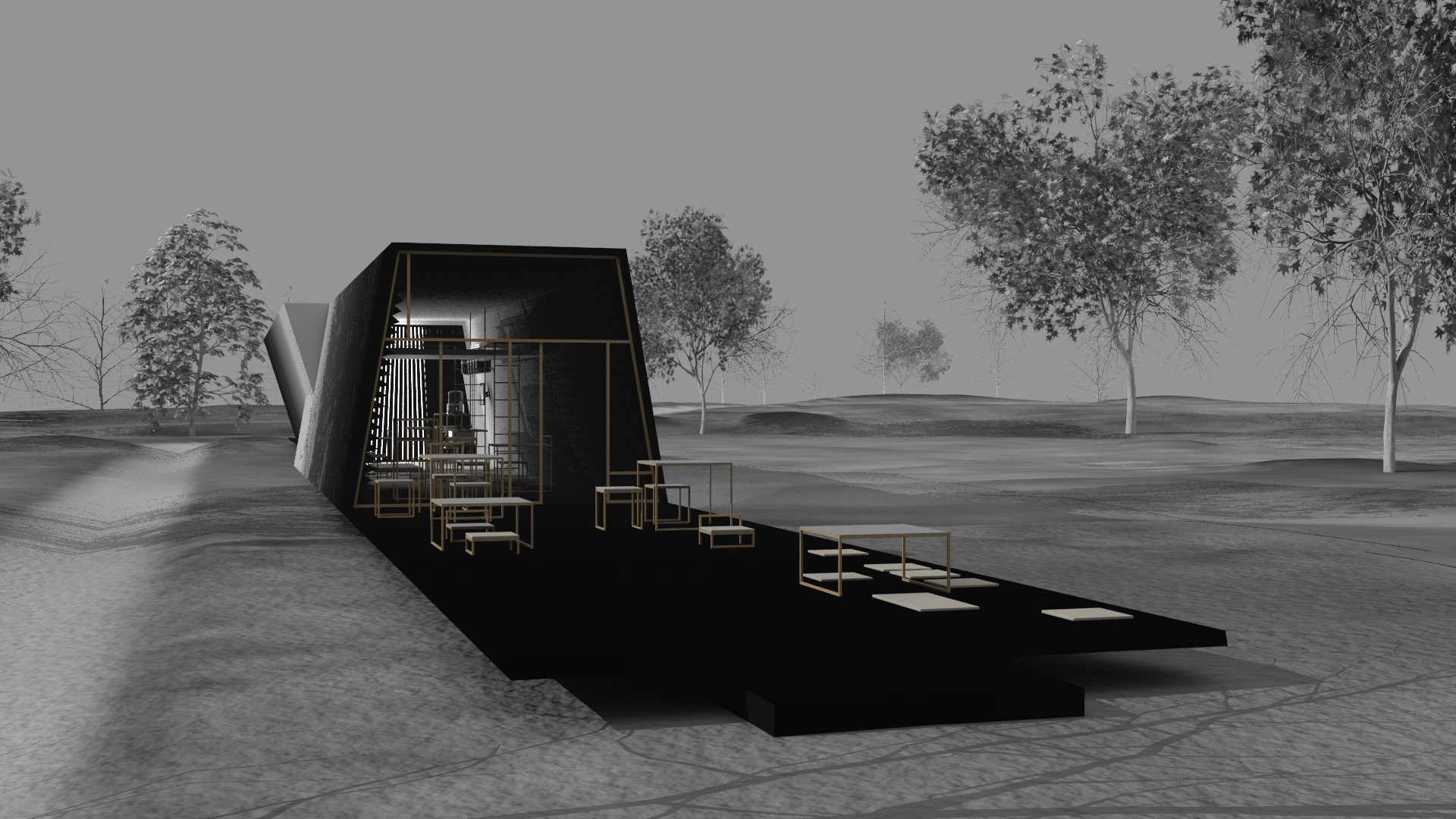



Friday, August 28. 2020
Note: the discussion about "Data Materialization" between Nathalie Kane (V&A Museum, London) and Patrick Keller (fabric | ch, ECAL / University of Art and Design Lausanne (HES-SO)), on the occasion of the ECAL Research Day, has been published on the dedicated website, along with other interesting talks.
-----
Via ECAL

Research Day 2019 Natalie D. Kane from ECAL on Vimeo.
Saturday, February 17. 2018
Note: a few pictures from fabric | ch retrospective at #EphemeralKunsthalleLausanne (disused factory Mayer & Soutter, nearby Lausanne in Renens).
The exhibition is being set up in the context of the production of a monographic book and is still open today (Saturday 17.02, 5.00-8.00 pm)!
By fabric | ch
-----
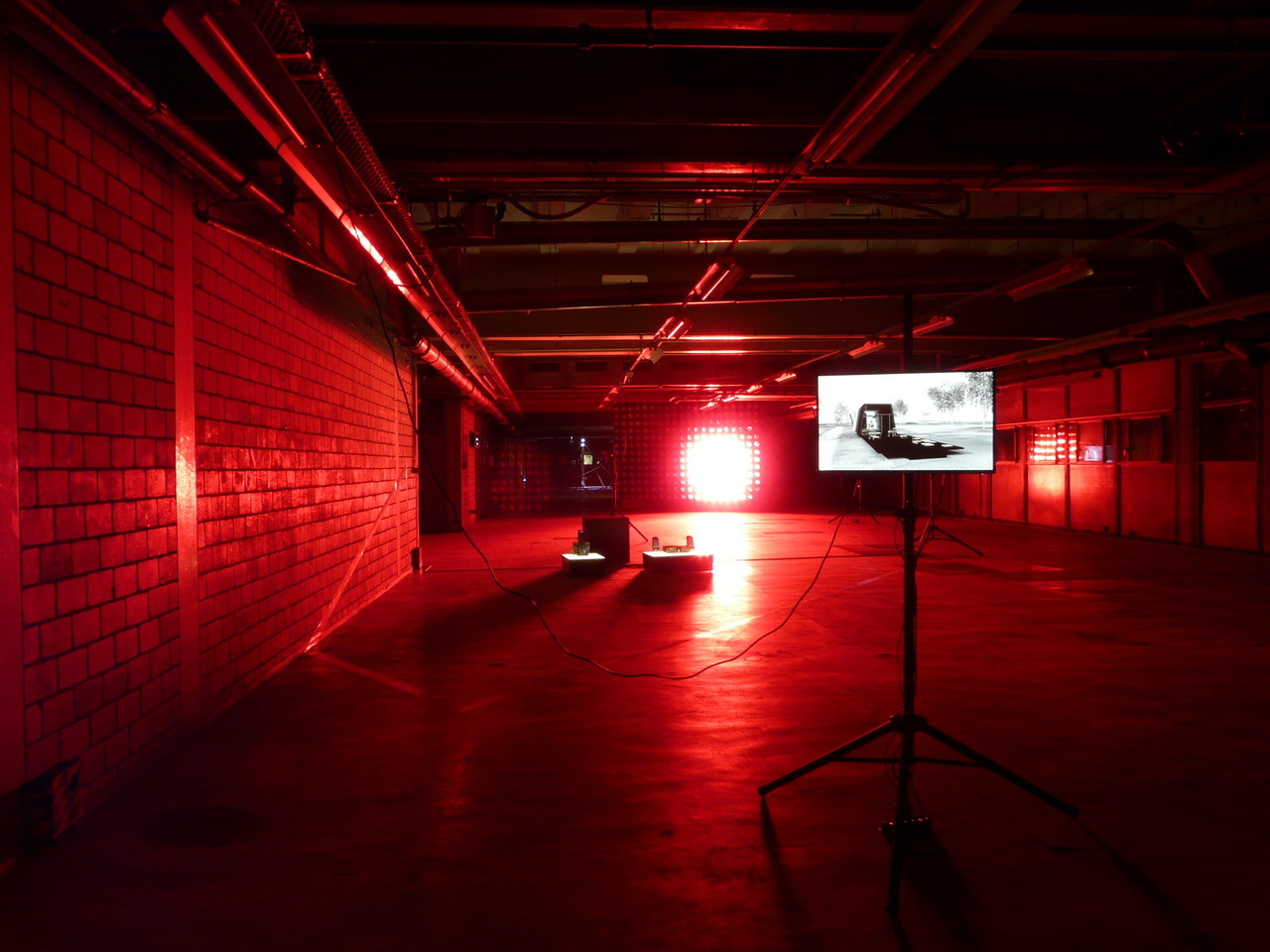







-

All images Ch. Guignard.
Monday, February 05. 2018
Note: 2017 was very busy (the reason why I wasn't able to post much on | rblg...), and the start of 2018 happens to be the same. Fortunately and unfortunatly!
I hope things will calm down a bit next Spring, but in the meantime, we're setting up an exhibition with fabric | ch. A selection of works retracing 20 years of activities, which purpose will be also to serve in the perspective of a photo shooting for a forthcoming book.
The event will take place in a disuse factory (yet a historical monument from the 2nd industrial era), near Lausanne.
If you are around, do not hesitate to knock at the door!
By fabric | ch
-----
Environmental Devices · Projets & expérimentations (1997-2017)

Image: Daniela & Tonatiuh.
During a few days, in the context of the preparation of a book, a selection of works retracing 20 years of activities of fabric | ch will be on display in a disused factory close to Lausanne.
·
Information: http://www.fabric.ch/xx/
·
Opening on February 9, 5.00-11.00pm
·
Visiting hours:
Saturday - Sunday 10-11.02, 4.00-8.00pm
Wednesday 14.02, 5.00-8.00pm
Friday-Saturday 16-17.02, 5.00-8.00pm.
·
Or by appointment: 021.3511021
Guided tours at 6.00pm
-----
Pendant quelques jours et dans le contexte de la création d'un livre monographique, accrochage d'une sélection de travaux retraçant 20 ans d'activités de fabric | ch.
·
Informations: http://www.fabric.ch/xx
·
Vernissage le 9 février, 17h-23h
·
Heures de visite:
Samedi - dimanche 10-11.02, 16h-20h
Mercredi 14.02, 17h-20h
Vendredi-samedi 16-17.02, 17h-20h00
·
Ou sur rendez-vous: 021.3511021
Visites commentées à 18h.
&
Event on Facebook.
|

















.jpg)



































